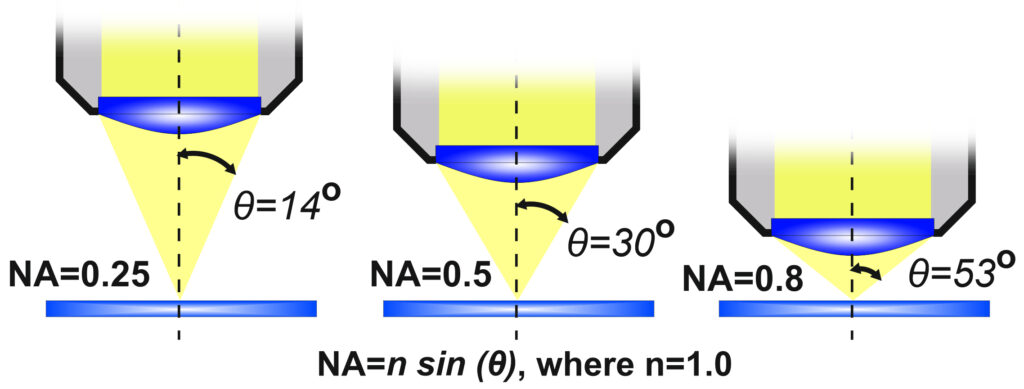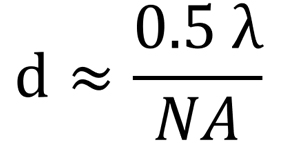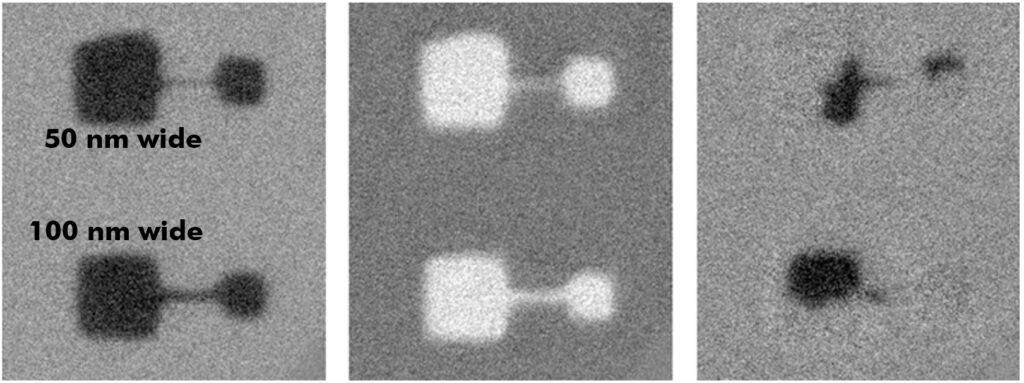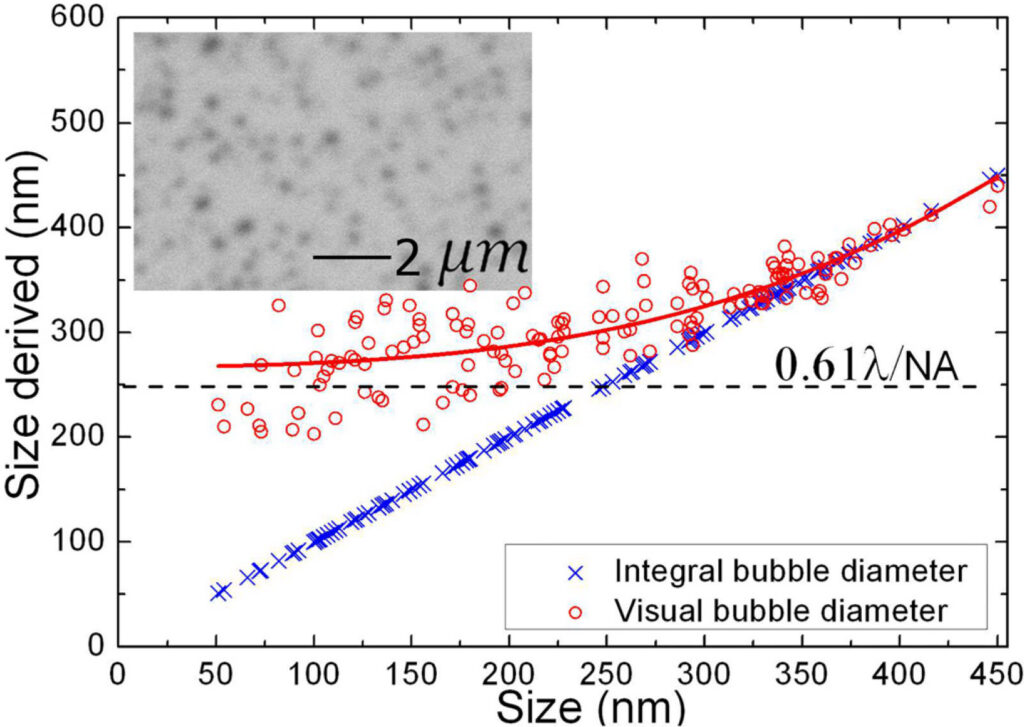
Optical resolution limit
The spatial resolution of our Kerr microscopes is limited by diffraction when the dimension of magnetic domains is reaching the order of the light wavelength. According to Abbe, the resolving power (the separation between 2 domains, still allowing to see them) can be defined as

where λ is a wavelength of the light and NA is numerical apperture of the objective lens, which characterizes the range of angles over which the objective can accept the reflected light. It is defined by NA=n sin(θ), where n is the index of refraction of the medium in which the lens is working (1.00 for air and typically 1.52 for immersion oil).
Typical working distances for the obejcetives are ranging from 370 μm (100x Oil lens) to 4.3 mm (10x lens).
| Magnification | NA | d460 nm, nm | d640 nm, nm |
|---|---|---|---|
| 1.25 x | 0.03 | 7670 | 10700 |
| 2.5 x | 0.06 | 3830 | 5330 |
| 5 x | 0.13 | 1770 | 2460 |
| 10 x | 0.25 | 920 | 1280 |
| 20 x LD | 0.22 | 1050 | 1450 |
| 20 x | 0.50 | 460 | 640 |
| 50 x | 0.80 | 288 | 400 |
| 60 x LD | 0.70 | 329 | 457 |
| 100 x | 0.90 | 256 | 356 |
| 100 x oil | 1.30 | 177 | 246 |
Resolution limit of the objective lenses
In the table, the spatial resolution of a number of objective lenses, as they are commonly used in evico magnetics Kerr microscopes, is collected for blue and red light. Note that the magnification of the objective lenses is irrelevant as the resolution is only determined by NA and the wavelength. According to the table, a resolution of almost 150 nm can be expected by using blue light and an oil-immersion objective with highest numerical aperture.

Actual resolution limit for magnetic objects
A standard microscope for high-resolution domain imaging is typically equipped with 10x, 20x, 50x, 100x oil objective lenses, which ensure the corresponding resolution limits (indicated within the figure) when blue light (λ=457 nm) is used.
However, despite these resolution limits, independent magnetic objects, such as domain walls or skyrmionic bubbles, with sizes close to the resolution limit can still be observed. Here the domain wall in an amorphous metallic ribbon (315 nm) and a FeSi steel sheet (130 nm) can be clearly seen, even when imaged with a low-resolution lens.

The resolving power or limit of resolution should not be confused with the visibility of isolated magnetic objects. Practically, there is no limit to visibility as long as the reflected intensity of the domain is strong enough to make it stand out from any surrounding background. Here, vertically magnetized structures imaged with the (stronger) polar Kerr effect have a clear advantage over in-plane structures that require the longitudinal Kerr effect. Although the object is not “resolved”, it can still be seen with a contrast profile that loses intensity compared to the profile of a larger object and is broadened by diffraction.
Here the magnetic state (direction of saturation or demagnetized state) of the flat nano-wire of with a width of only 50 nm can be clearly observed.
(sample courtesy Jimmy Zhu and Matt Moneck, Carnegie Mellon University, Pittsburgh)

For the analysis of the Kerr contrast profiles of the independent magnetic objects even with the size below the optical resolution limit the integral technique can be applied.
While the visually estimated diameters (full width at half maximum) of the hybrid buble domains approach a constant value of around 250 nm close to the optical resolution of the system (Rayleigh criterion), the integrally obtained (according to extendend Kirchhoff diffraction theory) give the appropriate value even for objects with the size of 50 nm, well below the resolution limit.
The resolution limit of the Kerr microscopy is further addressed in Relevant technical publications and in the following paper:
Size analysis of sub-resolution objects by Kerr microscopy (I. Soldatov, W. Jiang, S.G.E. Te Velthuis, A. Hoffmann and R. Schäfer, Appl. Phys. Lett. 112 (26), 262404 (2018))
